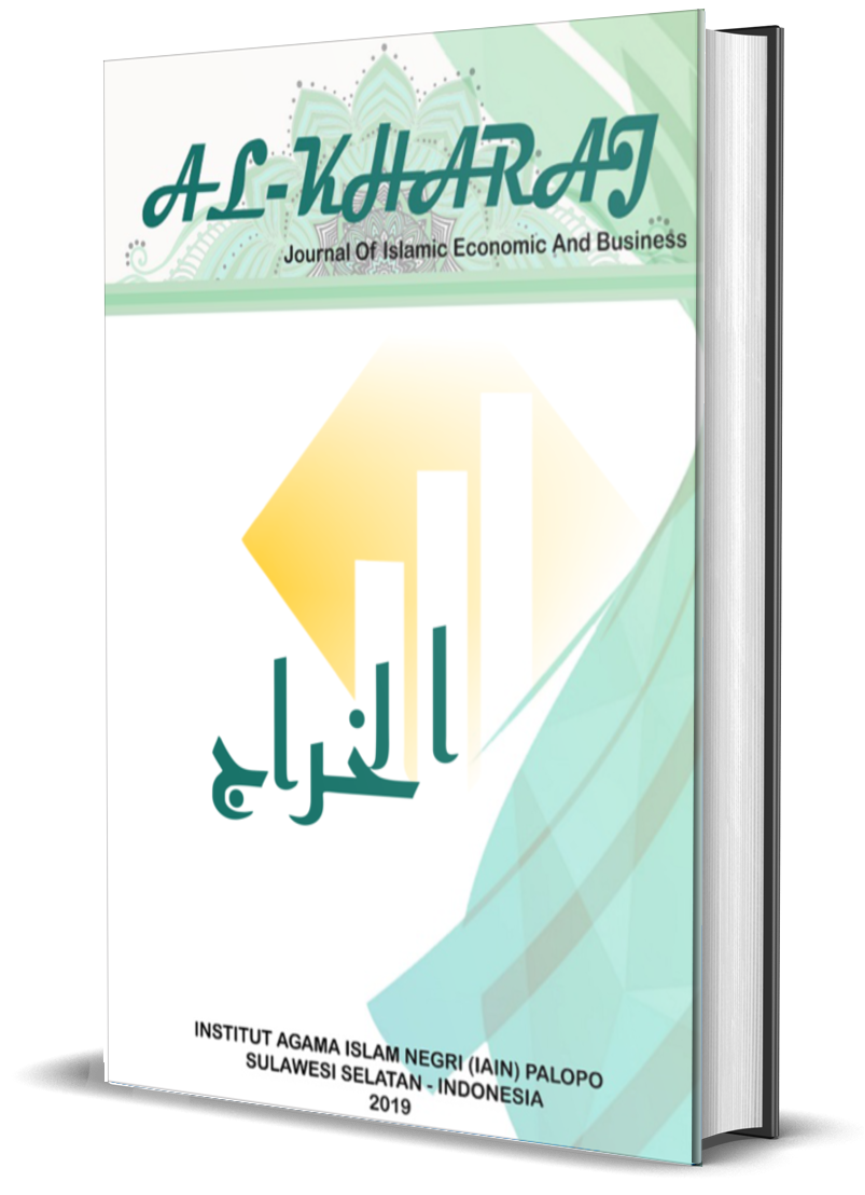Digital Marketing Approaches For Tourism Growth: A Study of Puncak Bila, Sidrap
DOI:
https://doi.org/10.24256/kharaj.v7i4.8092Keywords:
Digital Marketing, Tourist Visits, Sustainable Tourism, Puncak BilaAbstract
This study explores the effectiveness of digital marketing strategies in increasing tourist visits to Puncak Bila Tourism Park, Sidrap, South Sulawesi. Employing a qualitative descriptive approach through interviews, observations, and documentation, the research examines supporting and constraining factors in digital promotion. Results indicate that social media platforms Instagram, TikTok, and Facebook play a central role in destination branding, strengthened by user-generated content (UGC) that broadens reach organically. Visitor data from 2021 to 2024 show a sharp rise in arrivals, reflecting the positive impact of digital promotion. However, constraints remain, including limited digital skills, insufficient infrastructure, and weak SME integration. To address these gaps, strategic solutions based on the Penta Helix model capacity building, website development, and cross-sector collaboration are recommended. This study enriches theoretical perspectives on destination marketing while providing practical implications for sustainable, community-based tourism development in Indonesia.
References
Afifah, M. N., & Drajat, M. S. (2022). Media Sosial Instagram sebagai Media Promosi Cicalengka Dreamland. Bandung Conference Series: Public Relations, 2(2). https://doi.org/10.29313/bcspr.v2i2.4461
Buhalis, D. (2020). Technology in tourism-from information communication technologies to eTourism and smart tourism towards ambient intelligence tourism: a perspective article. Tourism Review, 75(1), 267–272. https://doi.org/10.1108/TR-06-2019-0258
Darmana, D., Rahman, Z., Mapparenta, M., & Alamsyah, A. (2021). Dampak Taman Wisata Puncak Terhadap Pertumbuhan Pendapatan Masyarakat Di Desa Bila Riase Kecamatan Pitu Riase Kabupaten Sidenreng Rappang. Economos : Jurnal Ekonomi Dan Bisnis, 4(3), 203–214. https://doi.org/10.31850/economos.v4i3.915
Dinitri, S. (2018). Potensi Pengembangan Wisata Spiritual Di Kampung Budaya Sindangbarang, Bogor. National Conference of Creative Industry, September, 5–6. https://doi.org/10.30813/ncci.v0i0.1194
Gunawan, R. B., Supriadi, B., & Risfandini, A. (2024). Strategi pengembangan pariwisata Muslim friendly di Kota Pasuruan. Al Khidma: Jurnal Pengabdian Masyarakat, 4(2), 98–111. https://doi.org/10.35931/ak.v4i2.4154
Hu, Y., & Xu, S. (2021). Memorability of a previous travel experience and revisit intention: The three-way interaction of nostalgia, perceived disappointment risk and extent of change. Journal of Destination Marketing & Management, 20, 100604. https://doi.org/10.1016/j.jdmm.2021.100604
Junaid, I. (2021). Models of Community Capacity Building for Homestay Management. Jurnal Ilmu Sosial Dan Humaniora, 10(2), 247. https://doi.org/10.23887/jish-undiksha.v10i2.33221
Kemp, S. (2024). Digital 2024: Global overview report. DataReportal. https://datareportal.com/reports/digital-2024-global-overview-report
Khotimah, I., & Sulistyowati, R. (2022). Pengaruh Electronic Word of Mouth (Ewom) Di Media Sosial Terhadap Minat Dan Keputusan Berkunjung Di Surabaya (Studi Pada Wisatawan Yang Pernah Mengunjungi Wisata Sejarah Surabaya). Jurnal Pendidikan Tata Niaga (JPTN), 10(2), 1679–1688. https://doi.org/10.26740/jptn.v10n2.p1679-1688
Kotler, P., & Keller, K. L. (2020). Principles Of Marketing (17th ed.). Pearson.
Moleong, L. (2017). Metode Penelitian Kualitatif (1st ed.). PT. Remaja Rosdakarya.
Monfort, A., Lopez-Vazquez, B., & Sebastian-Morillas, A. (2025). Building trust in sustainable brands: Revisiting perceived value, satisfaction, customer service, and brand image. Sustainable Technology and Entrepreneurship, 4(3). https://doi.org/10.1016/j.stae.2025.100105
Nadiastuti, N. S., Haro, A., & Krissanya, N. (2025). Pengaruh social media marketing, user-generated content, destination image terhadap visit intention di desa wisata Wae Rebo. Jurnal Manajemen Terapan Dan Keuangan (Mankeu), 14(2), 933–947.
Najib, M., & Surono. (2022). Analisis Pestel Untuk Mengetahui Hambatan Kunci Pengembangan Wisata Halal Di Indonesia: Studi Kasus Pada Wisata Danau Toba. 4(1), 23–46. https://www.kemenparekraf.go.id/berita/siaran-pers-indonesia-raih-peringkat-pertama-
Pratiwi, A. N. (2022). Pengaruh Social Media Marketing Dan Sikap Konsumen Terhadap Keputusan Pembelian Sepeda Motor Trail Di Cv. Greentech Kawasaki Cabang Bangun Jaya. Hirarki : Jurnal Ilmiah Manajemen Dan Bisnis, 4(2), 659–668. https://doi.org/10.30606/hirarki.v4i2.1518
Rana, N. P., Slade, E. L., Sahu, G. P., Kizgin, H., Singh, N., Dey, B., Gutierrez, A., & Dwivedi, Y. K. (2020). Digital and Social Media Marketing: Emerging Applications and Theoretical Development. Springer International Publishing.
Rasoolimanesh, S., Seyfi, S., Hall, C., & Hatamifar, P. (2021). Understanding memorable tourism experiences and behavioural intentions of heritage tourists. Journal of Destination Marketing and Management, 21(100621). https://doi.org/https://doi.org/10.1016/J.JDMM.2021.100621
Risfandini, A., Yulianto, I., & Wan-Zainal-Shukri, W. H. (2023). Local Community Empowerment for Sustainable Tourism Development: A Case Study of Edelweiss Park Wonokitri Village. International Journal of Sustainable Development and Planning, 18(11), 3617–3623. https://doi.org/10.18280/ijsdp.181127
Saputra, I. G. G. (2021). Bentuk Digitalisasi Desa Wisata Di Masa Normal Baru. Jurnal Kepariwisataan, 20(1), 18–24. https://doi.org/10.52352/jpar.v20i1.448
Sofi, M. R., Bashir, I., Alshiha, A., Alnasser, E., & Alkhozaim, S. (2025). Creating Exceptional Guest Experiences: The Role of Engagement and Relationship Building in Hospitality. Journal of Hospitality and Tourism Insights, 8(3), 891–914. https://doi.org/10.1108/JHTI-04-2024-0318
Sugiyono. (2020). Metode Penelitian Pariwisata (Kuantitatif, Kualitatif, Kombinasi, R&D).
Sulistiowati, R., Adisa, A. F., & Caturiani, S. I. (2021). Stakeholder Synergy For Sustainable Tourism. Journal of Sustainable Tourism and Entrepreneurship, 3(1), 53–60. https://doi.org/10.35912/joste.v3i1.1236
Suryani, T., Fauzi, A. A., & Nurhadi, M. (2021). Enhancing brand image in the digital era: Evidence from small and medium-sized enterprises (SMEs) in Indonesia. Gadjah Mada International Journal of Business, 23(3), 314–340. https://doi.org/10.22146/gamaijb.51886
Utama, I. P. H. B., & Giantari, I. G. A. K. (2020). PERAN CITRA DESTINASI MEMEDIASI PENGARUH E-WOM TERHADAP NIAT BERKUNJUNG KEMBALI WISATAWAN (Studi Pada Obyek Wisata Taman Edelweis Bali). E-Jurnal Manajemen Universitas Udayana, 9(4), 1230. https://doi.org/10.24843/ejmunud.2020.v09.i04.p01
Yunaena, I., Apriliani, R. A. E. P., & Trihudiyatmanto, M. (2025). Pengaruh e-WOM, viral marketing, servicescape dan service quality terhadap purchase decision konsumen (Studi di The Heaven Glamping Resto Wonosobo). Jamasy: Jurnal Akuntansi, Manajemen & Perbankan Syariah, 5, 1–14.
Yusuf, M. F., Pramana, E., & Setiawan, E. I. (2023). Faktor-Faktor yang Mempengaruhi Repurchase Intention Pada E-Marketplace Dengan Menggunakan Extended Expectation Confirmation Model (ECM). Teknika, 12(1), 1–10. https://doi.org/10.34148/teknika.v12i1.573
Downloads
Published
How to Cite
Issue
Section
Citation Check
License
Copyright (c) 2025 Muhammad Danyal, Titien Damayanti, Hanugerah Kristiono Liestiandre

This work is licensed under a Creative Commons Attribution-ShareAlike 4.0 International License.
Authors retain copyright and grant the journal right of first publication with the work simultaneously licensed under a Creative Commons Attribution-ShareAlike 4.0 International License. In line with the license, authors are allowed to share and adapt the material. In addition, the material must be given appropriate credit, provided with a link to the license, and indicated if changes were made. If authors remix, transform or build upon the material, authors must distribute their contributions under the same license as the original.









